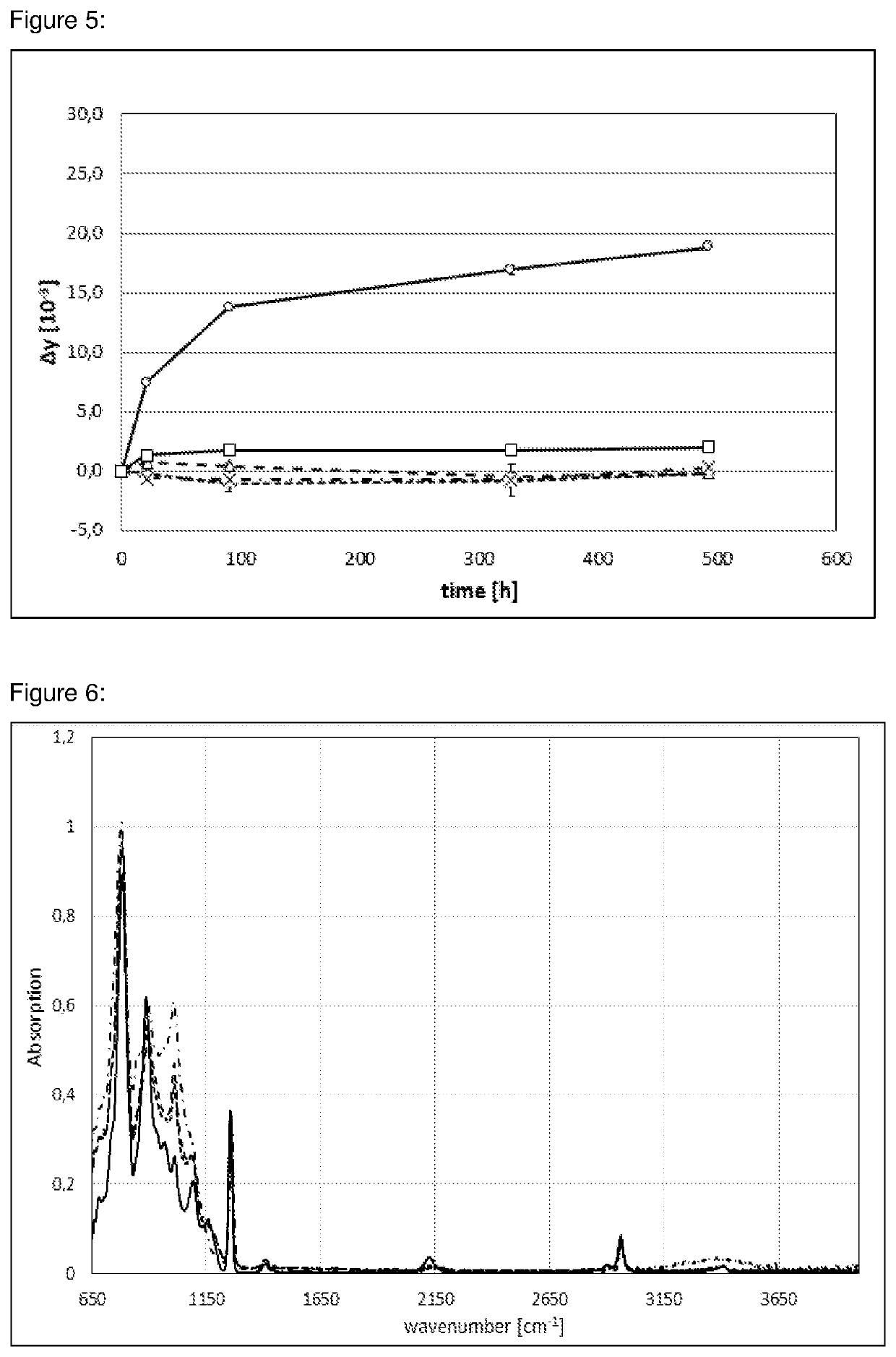Manufacturing process for an optoelectronic device
- Summary
- Abstract
- Description
- Claims
- Application Information
AI Technical Summary
Benefits of technology
Problems solved by technology
Method used
Image
Examples
example 1
[0156]A dispersion of 10 g of the organopolysiloxazane Material A, 15 g phosphor (YGA 200 547) and 50 ml ethyl acetate was sprayed on an Excelitas LED package (LED precursor) in three layers of each ca. 10 μm thickness in average. After spraying of each layer the LED package was exposed to an IR emitter described in FIG. 8 for 1 min. After the 1 min exposure the coating was dry-to-touch and the colour coordinates were measured. Then the process was repeated: spraying three layers, curing each layer by IR exposure and finally measuring the colour coordinates. The data obtained from both colour-point measurements were used to calculate the number of the remaining layers necessary to reach the target colour point of x / y=0.400 / 0.377. After spraying the required number of the calculated remaining layers (usually 2, 3 or 4) and curing each layer by IR exposure, the LED package was finally cured on a hotplate at 220° C. for 4 h. This process was used to prepare a number of 25 LEDs to have ...
example 2
ng
[0158]25 LEDs were prepared according to the procedure described in Example 1, except that the IR exposure was replaced by UV-C exposure for 1 min with a UV-lamp as described in FIG. 9. The results are shown in Table 1.
[0159]FIG. 2 shows the colour coordinate shift resulting after final curing, wherein the colour coordinates before final curing are set to zero.
example 3 (
Reference Example): Thermal Curing
[0160]25 LEDs were prepared according to the procedure described in Example 1, except that the IR exposure was replaced by thermal curing on a hotplate at 150° C. for 1 min. After the thermal curing the coating was still sticky. The results are shown in Table 1. FIG. 3 shows the colour coordinate shift resulting after final curing, wherein the colour coordinates before final curing are set to zero.
TABLE 1Standard deviation a of the colour coordinates x and y andaverage colour point shift of x- and y-coordinate after full curing, calculated for 25 devices.averageaveragecolour colour σσpoint shift point shift Examplex-coordinatey-coordinatex-coordinatey-coordinateExample 1 0.00250.00280.0160.015(IR)Example 2 0.00230.00230.0190.018(UV-C)Example 30.00720.00630.0710.071(reference,thermal curing)
[0161]The standard deviation a of the colour coordinates x and y of the IR- and UV-precured LEDs is much smaller when compared to the thermally cured reference LE...
PUM
| Property | Measurement | Unit |
|---|---|---|
| Thickness | aaaaa | aaaaa |
| Wavelength | aaaaa | aaaaa |
Abstract
Description
Claims
Application Information
 Login to View More
Login to View More - R&D
- Intellectual Property
- Life Sciences
- Materials
- Tech Scout
- Unparalleled Data Quality
- Higher Quality Content
- 60% Fewer Hallucinations
Browse by: Latest US Patents, China's latest patents, Technical Efficacy Thesaurus, Application Domain, Technology Topic, Popular Technical Reports.
© 2025 PatSnap. All rights reserved.Legal|Privacy policy|Modern Slavery Act Transparency Statement|Sitemap|About US| Contact US: help@patsnap.com



